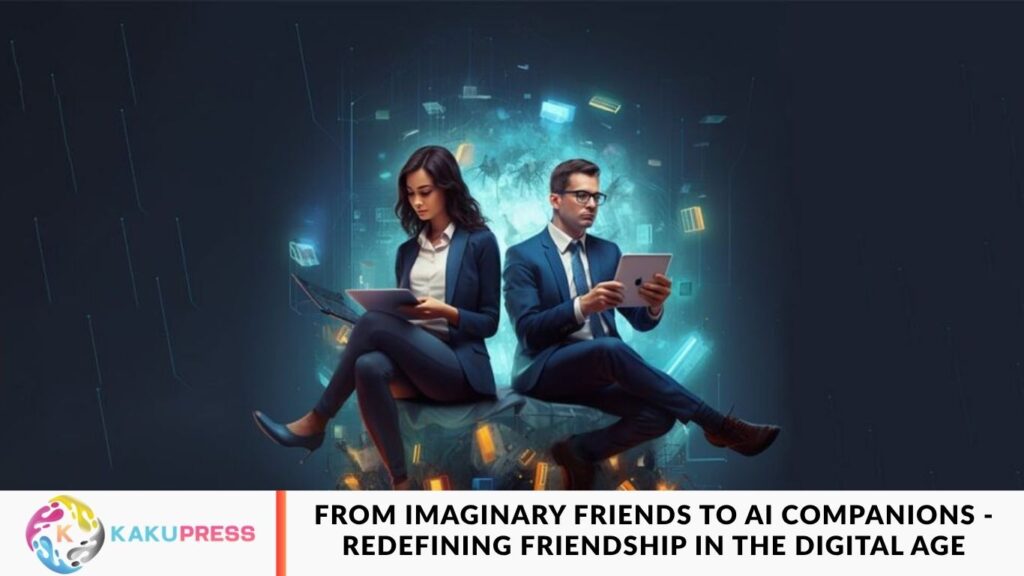For generations, children have created imaginary friends—figments of their imagination that offer comfort, play, and companionship. These invisible allies weren’t bound by rules or reality, giving kids a safe mental space to explore emotions, creativity, and social roles. Today, however, imaginary friends are facing competition from a new type of companion: AI-powered virtual friends.
With the rise of intelligent chatbots, interactive voice assistants, and digital pets, both children and adults are forming bonds with entities that can respond, learn, and evolve. These AI companions remember preferences, engage in conversation, and even simulate empathy, creating a sense of connection that goes beyond imagination alone.
Unlike traditional imaginary friends, AI companions are visible, programmable, and exist on devices such as smartphones, tablets, and smart toys. This shift prompts a fascinating question: are AI companions replacing imaginary friends, or are they simply reshaping the way we experience companionship?
The charm of an imaginary friend lies in its personalization and creative freedom. Each friend reflects the inner world of its creator, shaped entirely by thought and emotion. AI companions, while customizable, operate within coded boundaries. Their personalities are influenced by developers and algorithms. Yet, for children or those feeling lonely, a digital friend that responds to voice commands and adapts to routines can feel just as “real” as one imagined in the mind.
The move from imagined to programmed companionship also brings important implications. Imaginary friends encourage imagination, self-reflection, and emotional processing, offering mirrors for a child’s thoughts rather than answers. In contrast, AI companions provide real-time feedback and guidance, which can support learning and social interaction but may also limit open-ended creative exploration.
Emotional attachment to AI raises additional ethical questions. When a child forms a bond with a digital companion, what happens if the software updates, malfunctions, or becomes obsolete? Unlike the gentle fading of an imaginary friend, this attachment could lead to grief tied to a commercial product’s lifecycle.
Despite these changes, imaginary friends are not disappearing—they are evolving. The line between fantasy and technology is blurring, giving rise to hybrid companions that are both imagined and interactive. As AI technology continues to advance, it’s crucial to balance digital companionship with space for imagination, ensuring that children’s inner worlds remain as rich and creative as the digital friendships they now encounter.
Frequently Asked Questions
What are imaginary friends, and why do children create them?
Imaginary friends are fictional companions created by children to explore creativity, emotions, and social roles. They provide comfort, entertainment, and a safe mental space for self-expression.
How do AI companions differ from traditional imaginary friends?
Unlike imaginary friends, AI companions are digital, programmable, and interactive, responding to voice commands, learning routines, and simulating empathy.
Can AI companions replace imaginary friends?
AI companions may not fully replace imaginary friends, but can reshape childhood companionship by providing responsive interaction alongside traditional imaginative play.
What are the benefits of having AI companions for children?
AI companions can enhance learning, support social interaction, and provide consistent engagement, making them valuable tools for development and emotional support.
Do AI companions limit creativity compared to imaginary friends?
Because AI companions operate within pre-programmed boundaries, they may reduce open-ended imagination, while imaginary friends encourage original thinking and emotional exploration.
Are AI companions safe for children?
Most AI companions are designed for safety, but parents should monitor interactions to prevent over-reliance or exposure to digital risks.
How do children emotionally bond with AI companions?
Children can form attachments to AI companions due to responsive interaction, personalization, and a sense of companionship, similar to bonds formed with imaginary friends.
Conclusion
The evolution from imaginary friends to AI companions highlights how technology is transforming how children — and even adults — experience friendship. While imaginary friends foster creativity, emotional growth, and self-reflection, AI companions offer interactive, responsive, and personalized engagement that can feel equally real.

